How to Get Your Indie Game Featured on Steam
Landing your indie game in the spotlight on Steam feels like striking gold. It’s the dream, right? Massive visibility, a flood of new players, and the sweet sound of sales notifications. But let’s be real: Steam is crowded. Standing out is tough. Getting featured? That takes more than just a great game; it requires understanding the system, smart planning, and consistent effort. This isn’t about luck; it’s about strategy. This guide will break down exactly how Steam’s featuring works and give you actionable steps to dramatically increase your chances. Forget guesswork – let’s get your game noticed.
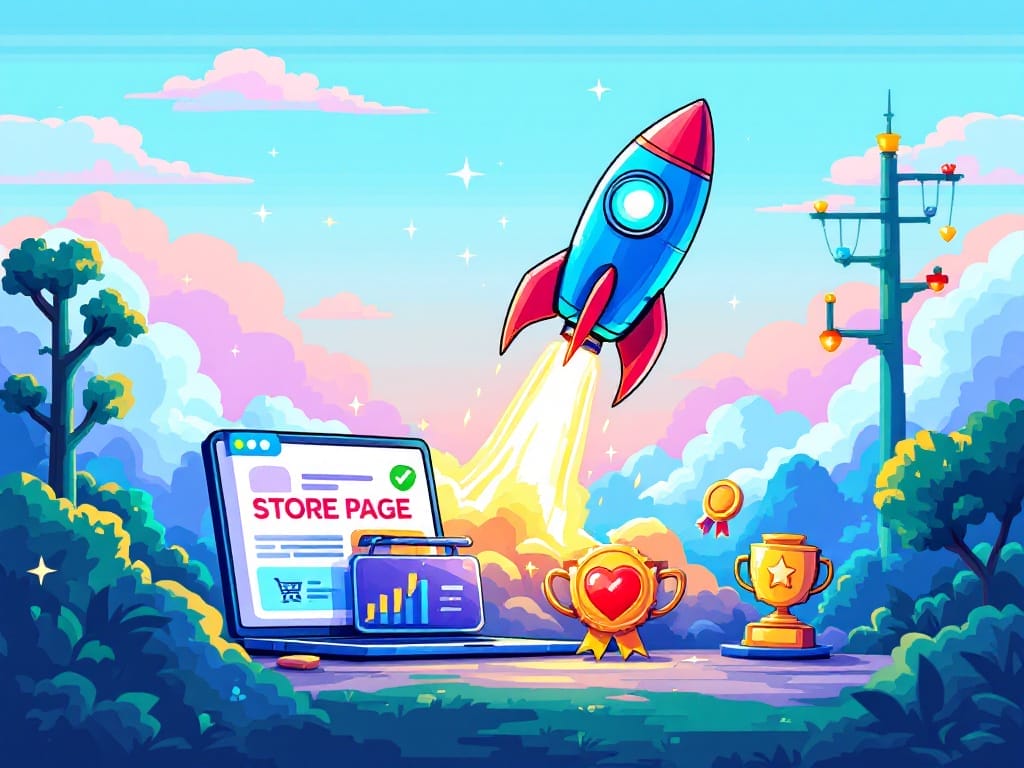
TL;DR: Your Quick Launch Checklist 🚀
Pressed for time? Here are the absolute must-do’s:
- Nail Your Store Page: First impressions count. Make your page polished, informative, and visually striking with relevant tags.
- Wishlists Are King 👑: Build them early, build them consistently. They fuel Steam’s algorithms and drive launch day buzz. Seriously, focus on this.
- Use Steam’s Tools: Participate in Steam Next Fest and other events. They are visibility goldmines.
- Engage, Engage, Engage: Connect with influencers, streamers, and build a community on social media. Word-of-mouth is powerful.
- Go Global: Localize your game and store page, and use regional pricing. It broadens your reach and Steam likes it.
Peeking Behind the Steam Curtain: How Featuring Actually Works
Getting featured isn’t just one thing. Steam uses a mix of computer smarts (algorithms) and actual human eyeballs (curation) to decide which games get prime real estate. Understanding both is key to playing the game effectively.

The Algorithmic Gatekeepers: What Makes Steam’s Robots Tick?
Think of Steam’s algorithms as complex sorting machines. They constantly analyze data to show users games they might like. These algorithms power sections like “Featured & Recommended,” the “Discovery Queue,” “New and Trending,” “Top Sellers,” and “Specials.” They dont really care how good your game’s story is in isolation; they care about data points that signal player interest and satisfaction.
So, what factors make these algorithms pay attention?
- Sales Spikes & Money Talks: This is a big one. A sudden jump in sales tells the algorithm, “Hey, people are buying this!” This trigger works whether it’s launch day or months later. Strong revenue is a clear signal of demand, just look at how games like Among Us exploded long after release when sales surged. It’s crucial to remember this.
- Player Love (Reviews & Ratings): Positive reviews matter, but it’s not just about hitting “Overwhelmingly Positive.” The system filters out games below “Mixed,” so staying above that baseline is important. However, just being “Mostly Positive” doesn’t guarantee success. A sudden drop below “Mixed” hurts visibility, but small improvements above it yield diminishing returns for algorithmic favor. Engagement metrics often weigh more heavily once you’re past the basic quality check.
- Keeping Players Hooked (Playtime & Engagement): Steam tracks how long people play your game. Games that keep players engaged for hours send strong positive signals. High total playtime is a powerful indicator that players are invested, making the algorithm more likely to recommend it.
- The Almighty Wishlist 🙏: We’ll dive deeper into this later, but know this: wishlists are critical. High wishlist numbers before launch heavily influence placement in “Popular Upcoming” and the Discovery Queue after launch. It signals strong pre-release interest.
- Tags, Genres & Finding the Right Audience: Using accurate and relevant tags is vital. This helps Steam match your game to players who like similar titles. Think of tags like keywords for Steam’s search engine and recommendation system. Don’t just slap on popular tags; use ones that genuinely reflect your game.
- Going Global (Localization & Regional Performance): Steam is worldwide. Translating your game and store page into key languages (like German, Chinese, Spanish, Russian, French, Japanese) and setting fair regional prices makes a difference. The algorithm notices games performing well in specific regions and favors those accessible to more users.
- Social Proof & Friends: What are a user’s friends playing, wishlisting, or recommending? This social data influences recommendations. Activity from Steam Curators you follow also plays a role.
- Keeping it Fresh (Updates & New Content): Regularly updating your game shows Steam it’s active and evolving. This can help maintain visibility long after launch.
What Doesn’t Directly Influence Algorithms?
- Clicks & Page Views Alone: While Steam provides this data to you for insight, simply getting clicks on your store page doesn’t directly boost algorithmic featuring. They care about conversions (wishlists, sales) and engagement.
Essentially, the algorithms reward momentum, player satisfaction, and good market fit.
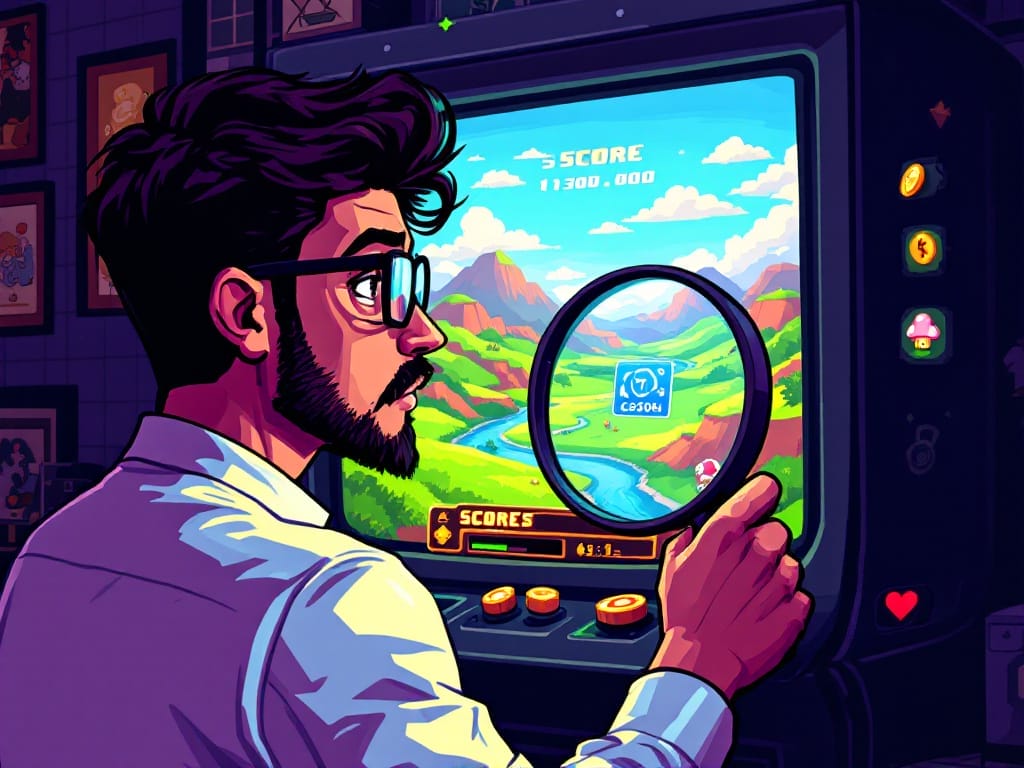
The Human Touch: Winning Over the Curators
Beyond the algorithms, real people at Valve curate specific, high-visibility spots. Think Front Page Takeovers or special seasonal sales promotions. These placements reach everyone on Steam, so the standards are high.
What do curators look for?
- Broad Appeal: Games that are likely to interest a large, diverse audience. Niche games can get featured, but broader appeal helps for the biggest slots.
- Polish and Quality: The game needs to look and feel professional. No major bugs, a clean user interface, and high production values.
- Strong Visuals: Compelling key art and screenshots that grab attention instantly.
- Localization and Pricing: Just like with algorithms, curators favor games that are accessible globally with appropriate regional pricing.
- Good Fit for the Promotion: If it’s a “Spooky Games Sale,” your cute farming sim probably won’t make the cut, no matter how good it is.
Getting noticed by curators often involves having a game that’s already doing well algorithmically, having a strong marketing presence, or sometimes, direct outreach (though this is less common and harder to achieve for most indies). Your best bet is to make a game so compelling and well-presented that it naturally catches their eye.
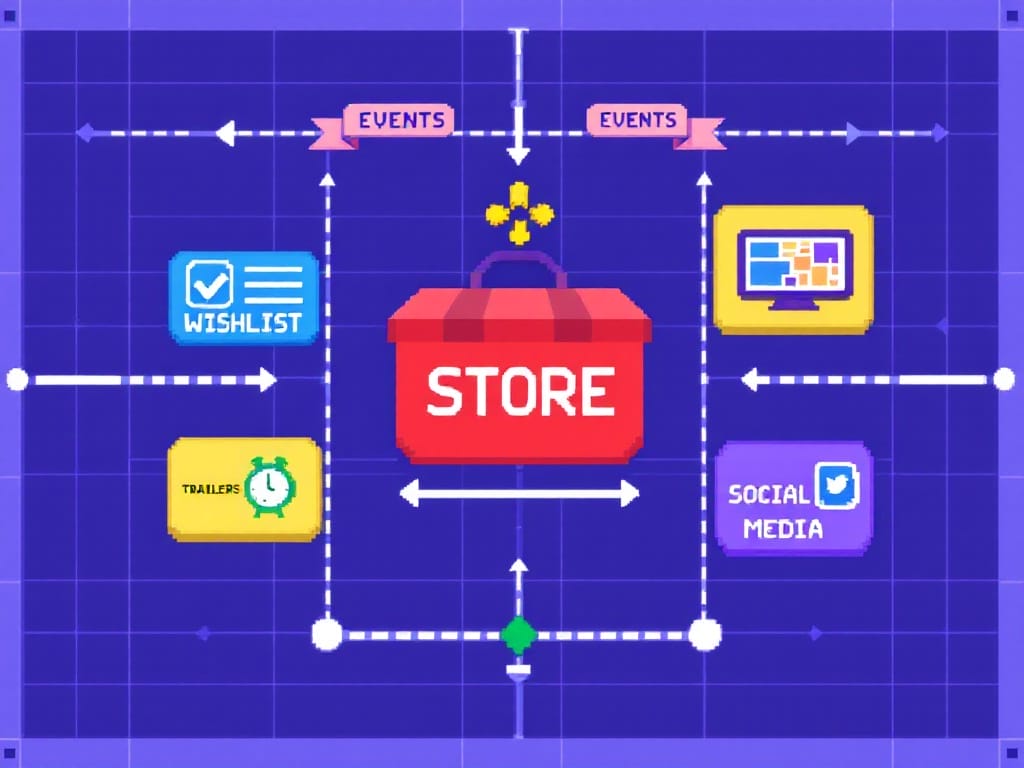
Your Game Plan: Concrete Steps to Steam Success
Okay, theory time is over. Let’s get practical. Here’s a step-by-step approach to maximize your visibility, targeting both the algorithms and the curators.
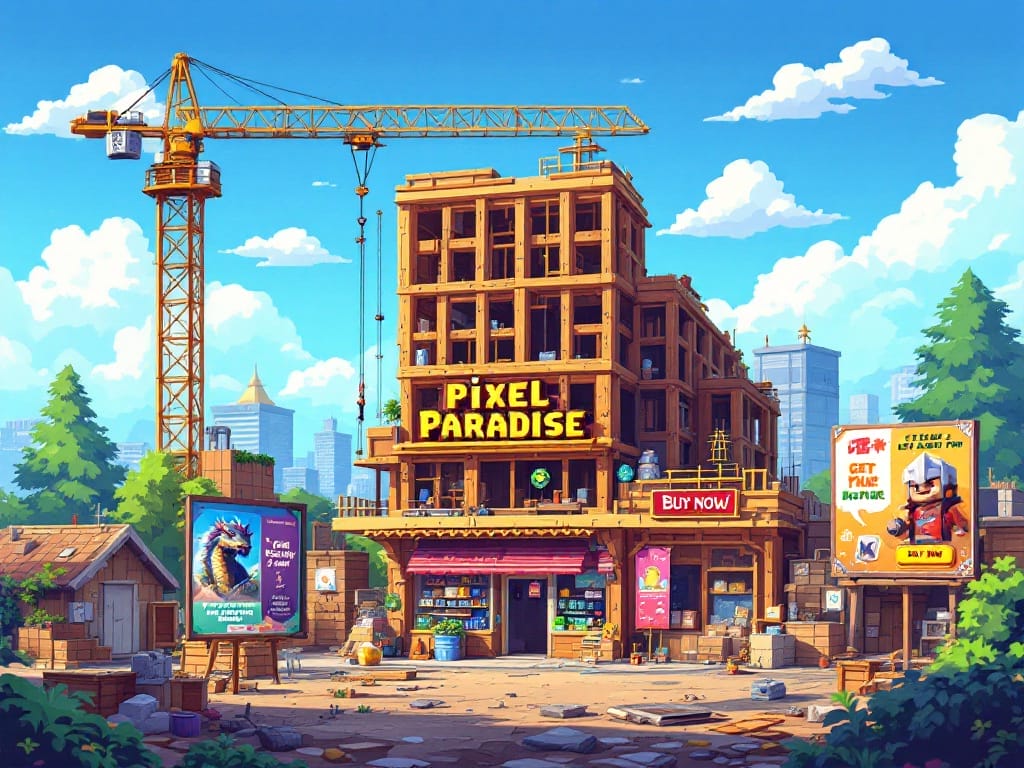
Laying the Foundation: Before You Even Think About Launch
Getting featured starts long before you hit the release button. These early steps are crucial.
Your Store Page: The Digital Handshake
Your Steam store page is often the first contact players have with your game. Make it count. It needs to be more than just functional; it needs to sell the dream.
- Killer Key Art & Screenshots: Use high-quality, distinct visuals. Your capsule art (the small banner image) is vital. It needs to pop even when small. Screenshots should showcase gameplay, atmosphere, and unique selling points immediately. Avoid generic or misleading images. Show, don’t just tell.
- Tagging Like a Pro: Choose relevant tags! This is how Steam categorizes your game. Be specific. Instead of just “Indie,” use tags like “Pixel Graphics,” “Story Rich,” “Roguelike Deckbuilder,” “Cozy,” etc. Accurate tags help the Discovery Queue find the right players for you. Look at successful similar games for ideas, but ensure they match your game.
- Compelling Description: Write a clear, concise, and exciting “About This Game” section. Hook readers in the first sentence. Explain what makes your game unique. Use bullet points for key features. Keep it professional and error-free (mostly!). A polished page signals quality.
Example: Imagine two descriptions. One says: “An RPG where you fight monsters.” The other: “Forge your destiny in a war-torn land! Master elemental magic, recruit unique companions, and battle fearsome beasts in this epic hand-drawn RPG.” Which one makes you want to click?
Speak Their Language: Localization & Regional Pricing
Don’t limit your audience. Steam is global.
- Translate Everything: Localize your game and your store page text. Focus on high-potential languages first: EFIGS (English, French, Italian, German, Spanish) is standard, but also consider Simplified Chinese, Japanese, Korean, Brazilian Portuguese, and Russian, as these represent huge player bases. It’s favored by both algorithms and curators.
- Price Fairly: Use Steam’s recommended regional pricing. Making your game affordable in different economies makes it accessible and signals to Steam you’re serious about global reach. Players notice and appreciate this; ignoring it can lead to backlash in forums like this discussion.
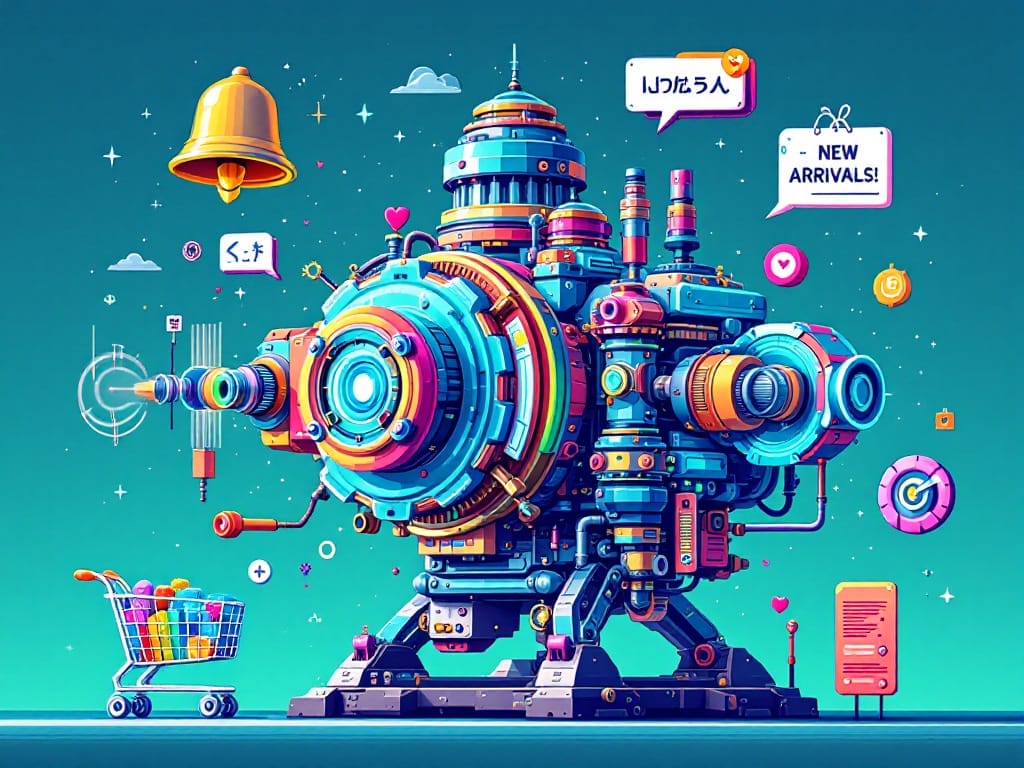
Building Momentum: The Pre-Launch Buzz Machine
Visibility doesn’t magically appear on launch day. You need to build anticipation.
The Wishlist Engine: Your Most Powerful Tool ✨
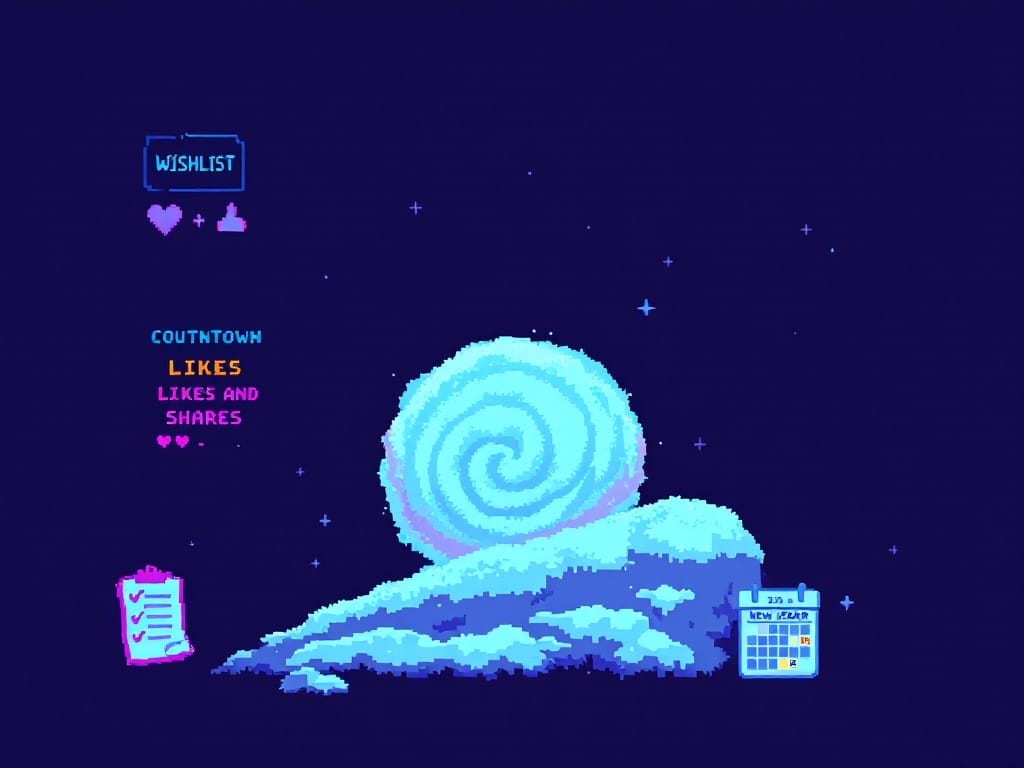
If you remember only one thing from this guide, make it this: Focus on building wishlists. They are crucial for launch visibility.
- Why So Important? High wishlist counts directly impact Steam’s algorithms. They heavily influence the “Popular Upcoming” list, which is prime real estate. Hitting around 7,000-10,000 wishlists is often seen as a good target to get decent visibility at launch. Each wishlist tells Steam, “People want this game!”
- Launch Day Boost: Everyone who wishlisted your game gets an email notification when it releases. This drives a vital surge of day-one sales, which further boosts your visibility in “New and Trending” and “Top Sellers.” It’s a self-reinforcing cycle.
- How to Get Them:
- Announce Early: Get your Steam page up months before launch, even if it’s simple initially. Start collecting wishlists ASAP.
- Call to Action: Always include a “Wishlist Now on Steam” link in your social media posts, trailers, website, and dev blogs. Make it easy for people.
- Run Ads (Carefully): Targeted ads on platforms like Reddit or Facebook driving traffic to your Steam page can work, if you have the budget.
- Engage Your Community: Talk to your followers, share updates, and remind them to wishlist.
- Steam Events: Participating in Steam Next Fest is huge for wishlists (more on this below).
Don’t underestimate the power of wishlists. Make growing them a primary marketing goal.

Talk to Your Future Players: Community Building
Start building a community before you launch.
- Choose Your Platforms: Be active where your target audience hangs out. Discord is great for direct engagement. Twitter/X, TikTok, Reddit (like r/IndieGaming or genre-specific subs) are essential for outreach. Maybe even YouTube for devlogs. Find your niche.
- Share Your Journey: Post regular updates, behind-the-scenes glimpses, concept art, funny bugs. Let people connect with you and the development process. Be authentic. Consistency is key.
- Listen and Interact: Respond to comments, ask for opinions, run polls. Make your followers feel involved. This builds loyalty and turns followers into advocates.
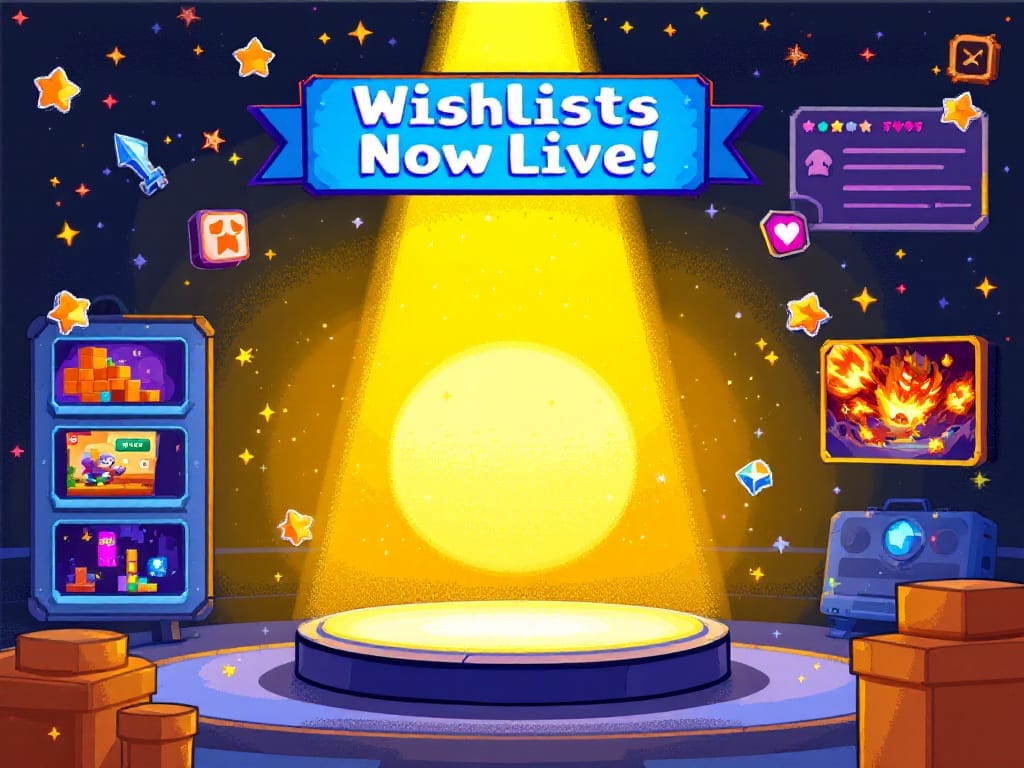
Showcasing Your Creation: Making an Impact
How you present your game visually and interactively matters immensely.
The Trailer: Your Game’s Elevator Pitch
A compelling trailer is non-negotiable. It needs to hook viewers in seconds.
- Focus on Gameplay: Show what players do in your game. Highlight unique mechanics and the core loop.
- Set the Mood: Use music and editing to convey the game’s atmosphere (exciting, mysterious, cozy, etc.).
- Keep it Concise: Aim for 60-90 seconds. Get to the good stuff quickly.
- High Quality: Ensure good resolution, smooth footage, and clear audio. Use tools designed for game capture and editing.
- End with a Call to Action: Finish with your game’s title, release date (or window), and a prominent “Wishlist on Steam” graphic.
Share your trailer everywhere. Pin it to your social profiles. Send it to press and influencers.
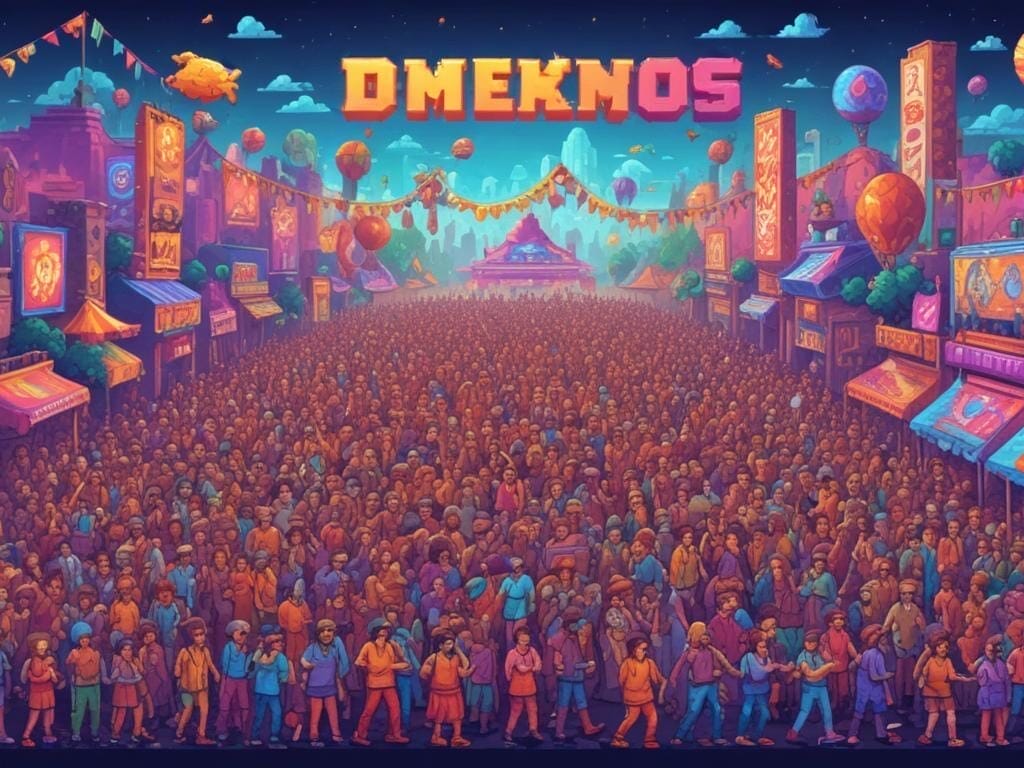
Steam Events & Festivals: Visibility Boosters
Participating in official Steam events, especially Steam Next Fest, is one of the most effective ways to gain visibility and wishlists.
- What is Next Fest? It’s a multi-day event where upcoming games offer free demos. Millions of players browse the festival pages.
- The Benefits: Massive exposure, potential for front-page featuring during the event, attracts streamers and press, and drives tons of wishlists from genuinely interested players. It’s a major opportunity.
- How to Participate: You need a playable demo and to apply via Steamworks when Valve announces the next festival. Plan well in advance to have a polished demo ready.
Other Steam sales and themed events can also provide featuring opportunities, often tied to discounts. Keep an eye on the Steamworks documentation for event schedules.

Spreading the Word: Outreach and Promotion
You need to actively get your game in front of people.
Influencers & Streamers: Your Amplifiers
YouTubers and Twitch streamers can introduce your game to thousands, sometimes millions, of potential players.
- Find the Right Fit: Look for streamers who play games in your genre or similar styles. Don’t just spam huge streamers; micro-influencers with engaged communities can be very effective. Genre matters for streamer interest.
- Personalize Your Pitch: Watch their content. Explain why your game is a good fit for their audience. Keep your email short, professional, and include a trailer and, crucially, a Steam key.
- Offer Free Copies: Send keys generously, but track who you send them to. Use tools like Keymailer or Woovit, or manage outreach manually. Free keys are standard practice.
- Timing is Key: Send keys a few weeks before launch to allow time for content creation. Follow up politely once or twice if you don’t hear back.
Coverage isn’t guaranteed, but getting even a few mid-sized streamers playing your game can significantly boost wishlists and launch sales. Sometimes, a game just clicks with the streaming zeitgeist.
Social Media Blitz: Consistent Communication
Use your chosen social platforms strategically.
- Tailor Content: What works on TikTok (short, snappy videos) differs from Twitter (quick updates, GIFs) or Reddit (longer posts, discussions). Understand the platform norms.
- Use Visuals: GIFs, short clips, and eye-catching screenshots perform best.
- Engage, Don’t Just Broadcast: Respond to comments, ask questions, participate in relevant conversations (#ScreenshotSaturday, etc.).
- Track What Works: Pay attention to which posts get the most engagement. Double down on successful formats. Use platform analytics.

Polish and Perfect: Feedback and Iteration
A buggy or unpolished game won’t get featured, no matter how good your marketing is.
- Playtesting is Crucial: Get real players to test your game early and often. Watch them play. Gather feedback on gameplay, difficulty, bugs, and clarity. Use this feedback to improve.
- Consider a Demo: Releasing a public demo (especially during Next Fest, but also potentially standalone) lets players try before they buy (or wishlist). It shows confidence and can generate valuable feedback and buzz. Demos help gauge interest.

The Journey Continues: Post-Launch Strategy
Getting featured isn’t just about launch day. Keep the momentum going.
- Updates + Discounts: Combine significant game updates (new content, features, major bug fixes) with a discount. This can push your game back into algorithmic lists like “Specials” or even “Top Sellers” if the spike is big enough. It’s a common tactic for sustained visibility.
- Stay Engaged: Continue talking to your community. Support your game. Happy players leave positive reviews and spread the word. Neglecting your game post-launch is a recipe for fading into obscurity.
Case Study Snapshot: The Tale of “Pixel Pioneers”
Let’s imagine a fictional indie duo, “Two Devs Studio,” and their game “Pixel Pioneers,” a charming crafting RPG. How did they apply these principles?
- Early Steam Page: They put their page up 9 months before launch with gorgeous capsule art and clear tags (“Crafting,” “Pixel Graphics,” “Exploration,” “Cozy”).
- Wishlist Focus: Every social media post, dev blog update, and Discord announcement included a clear “Wishlist on Steam!” call to action. They shared milestone progress to keep excitement high.
- Next Fest Power Play: They polished a compelling demo specifically for Steam Next Fest. They actively engaged with players in their demo’s discussion forum during the event. Result? They gained over 8,000 wishlists during the festival alone.
- Targeted Outreach: They researched and contacted 50 mid-sized YouTubers who frequently played cozy crafting or pixel art games, personalizing each email. About 10 covered the game near launch.
- Localization: They translated the game and store page into German, French, Spanish, and Simplified Chinese based on early wishlist data showing interest from those regions.
- Launch & Beyond: Launching with over 15,000 wishlists, they hit the “New and Trending” list. They followed up three months later with a major content update paired with a 20% discount, getting them featured in the “Specials” section.
“Pixel Pioneers” wasn’t an overnight sensation, but by strategically using Steam’s tools and focusing on wishlists and community, Two Devs Studio achieved significant visibility and built a sustainable player base. Their approach wasn’t magic; it was methodical execution.
Quick Reference: Your Steam Featuring Checklist
| Step | Why It Matters | Key Actions |
|---|---|---|
| Optimize Store Page | First impression; fuels algorithms & curator appeal | High-quality art/screenshots, clear description, accurate tags |
| Localize & Price Right | Expands audience; favored by Steam | Translate game/page, set regional prices |
| Build Wishlists | Drives launch visibility; algorithm fuel | Announce early, persistent CTAs, use events, engage community |
| Join Steam Events | Huge visibility boost; attracts players/press | Participate in Next Fest (with demo!), themed sales |
| Create a Strong Trailer | Captures interest; essential marketing asset | Showcase gameplay/mood, keep concise, high quality, include CTA |
| Engage Influencers | Drives organic traffic; potential virality | Research relevant streamers, personalize pitch, offer free keys |
| Use Social Media | Builds community; sustains buzz | Be active on relevant platforms, share updates, engage with followers |
| Gather Feedback/Iterate | Improves game quality; increases satisfaction | Playtest extensively, consider releasing a demo, act on feedback |
| Post-Launch Promotion | Maintains momentum; re-engages audience | Combine updates with discounts, continue community engagement |
Final Thoughts: Playing the Long Game
Getting featured on Steam is a marathon, not a sprint. It requires a blend of art (making a great game) and science (understanding and leveraging Steam’s systems).
- Genre Matters: Some genres naturally resonate more with the core Steam audience or streamers. Consider this during development, but passion for your project is paramount.
- Consistency is Underrated: Regular updates, consistent social media presence, and ongoing community engagement compound over time. Don’t give up after launch week.
- Optimize for Both: Remember you’re trying to appeal to both cold, hard algorithms and subjective human curators. A polished, well-marketed game with clear signs of player interest serves both masters.
- There are no guarantees: Sometimes, despite doing everything right, a game doesn’t hit the featuring jackpot. Focus on building a quality game and fostering a community – that provides value regardless of front-page placement. Marketing is an ongoing effort, not a one-time task.
Don’t be discouraged by the complexity. Break it down step-by-step. Focus on making a game you’re proud of, presenting it professionally on Steam, building genuine connections with potential players, and relentlessly encouraging those wishlists. Success on Steam is achievable for indies who are willing to put in the strategic work alongside development. Now go make it happen!
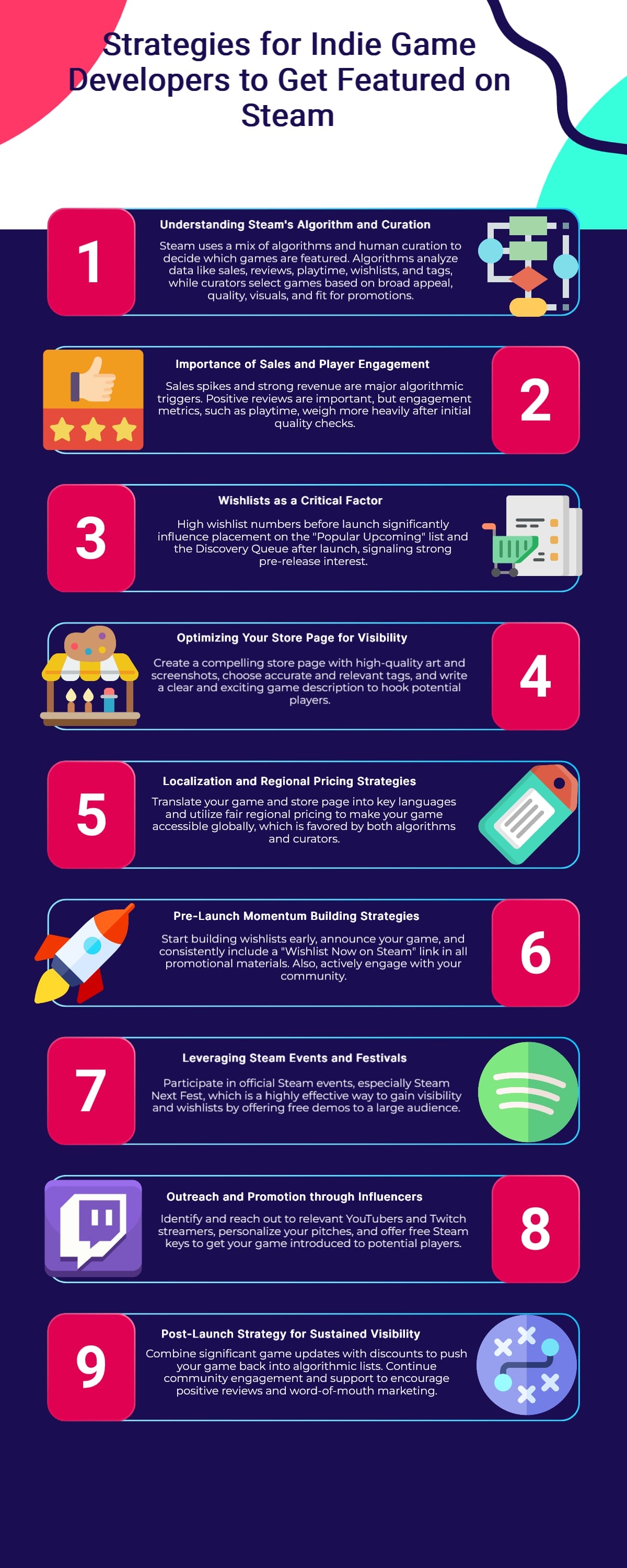
A game developer that wants to share its knowledge and experience with other game developers-




